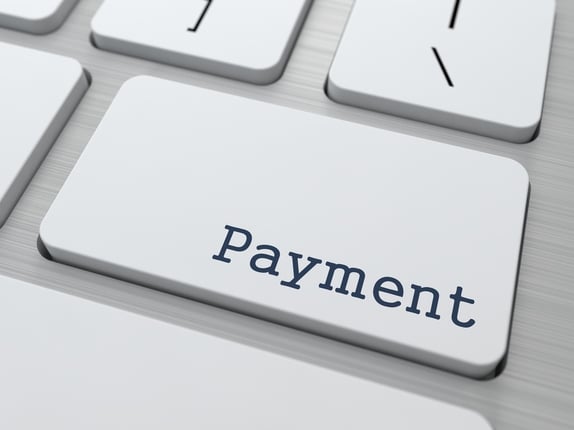
The shift from traditional checks to digital payments marks a significant evolution in financial practices, reshaping how transactions are conducted globally. Technological advancements have driven this transformation, increasing the speed, security, and convenience of financial operations.
As we transition towards a more digitized economy, understanding the dynamics of this change is crucial for individuals and businesses alike. This article explores the origins, current trends, and future implications of moving from paper-based to electronic payment systems, shedding light on the benefits and challenges of this evolution.
History of Traditional Financial Practices

The history of traditional financial practices is deeply rooted in using physical currency and, later, the adoption of checks. Early trade systems relied on barter and physical coins, evolving over centuries to include paper money as a standard means of commerce.
The invention of the check, a tool that allowed individuals to conduct transactions without needing immediate cash exchange, marked a significant milestone in banking history. Checks became a widespread method for financial dealings, providing a secure and documented way to transfer funds between parties.
For instance, donation checks have been a popular way to contribute to charities and organizations for decades. These paper checks are physical evidence of one's donation, allowing individuals to keep track of their charitable giving.
Banks played a crucial role in facilitating these transactions, acting as intermediaries that ensured the validity and completion of each exchange. Over time, issuing, clearing, and reconciling checks became more refined, incorporating various security features to prevent fraud.
However, despite their convenience and security, the use of checks began to decline with the advent of electronic payment systems. This shift was mainly due to the inefficiencies of handling physical documents, prompting a move towards more streamlined and faster digital solutions.
Other evolved financial practices over time include wire transfers, credit and debit cards, and online banking. These methods have gradually replaced traditional payment or receipt methods, offering more efficient and convenient ways to handle financial transactions.
Rise of Digital Payments

Digital payments have revolutionized how financial transactions are completed, moving away from physical checks and cash to electronic forms of money transfer. This transition is vividly illustrated in various sectors, including the entertainment industry, where Big Fake checks for Movies are used as props to depict the exchange of substantial funds.
Several factors have contributed to the rapid rise of digital payments, including technological advancements that offer secure and efficient transaction methods. The widespread adoption of smartphones and internet accessibility has further facilitated this shift, making digital payments convenient for users worldwide.
Consumer demand for quicker and more convenient payment options has also played a crucial role, pushing businesses to adopt digital payment systems that can complete transactions in seconds. Additionally, the global pandemic accelerated the transition to digital payments, as contactless transactions became the norm for safety reasons.
Financial institutions and fintech companies have been at the forefront, innovating and offering digital payment solutions that cater to the evolving market needs. Together, these factors have spurred the growth of digital payments and are shaping the future landscape of financial transactions.
Benefits of Digital Payments
The shift towards digital payments has introduced many advantages for consumers and businesses. Below are some of the benefits that underscore the growing preference for digital over traditional payment methods:
- Speed and Convenience: Digital payments can be made instantly from anywhere, anytime, using a smartphone or computer, eliminating the delays associated with cash or check processing.
- Enhanced Security: Advanced encryption technologies and security protocols significantly reduce the risk of fraud or theft that can occur with cash or checks.
- Reduced Costs: By cutting down on the physical materials and manual labor associated with processing checks, digital payments can lower business transaction costs.
- Easier Tracking and Management: Digital transactions create automatic records, simplifying the tracking and managing of finances for individuals and businesses.
- Global Reach: Digital payments facilitate more accessible and faster transactions across borders, opening up international business markets.
- Various Payment Options: Digital payments offer multiple options, including credit and debit cards, mobile wallets, and cryptocurrencies, giving users more flexibility in completing transactions.
- Automated Payment Scheduling: Online banking and digital payment systems offer the convenience of scheduling recurring payments, saving time and effort for individuals and businesses.
Challenges Faced by Digital Payment Systems

While there are numerous benefits to digital payments, this evolution has also brought about several challenges that need to be addressed for these systems' continued growth and stability. Some of the key challenges include:
- Security Concerns: Digital payment systems face ongoing threats from cybercriminals seeking to exploit vulnerabilities for financial gain, highlighting the need for robust security measures.
- User Privacy: As transactions move online, concerns about data privacy and protecting sensitive information have become prominent, requiring transparent policies and regulatory compliance.
- Payment Infrastructure: The transition to digital payments requires a reliable and efficient infrastructure to support seamless transactions across diverse platforms and devices, posing challenges in terms of scalability and interoperability.
- Fraud Prevention: With the rise of digital transactions, there is a parallel increase in fraudulent activities, necessitating advanced fraud detection mechanisms and proactive measures to safeguard against financial losses.
- Consumer Education: Many consumers may still be unfamiliar with digital payment methods or wary of their security implications, emphasizing the importance of education and awareness campaigns to promote adoption and trust.
- Regulatory Compliance: The evolving landscape of digital payments requires adherence to complex regulatory frameworks and standards, creating compliance challenges for businesses and financial institutions to navigate effectively.
- Technical Issues: Connectivity issues, server downtime, and other technical glitches can hinder the smooth operation of digital payment systems, posing a barrier to widespread adoption.
The Future Outlook of Digital Payments
The evolution of technology has fundamentally transformed the landscape of financial transactions, making digital payments a predominant method. These advancements underscore the importance of speed, security, and convenience in today's financial practices.
Reflecting on these changes, it becomes evident that adapting to the technological shifts in financial systems is not merely beneficial but necessary for both consumers and businesses. Ultimately, staying abreast of these developments ensures participation in a more efficient, secure, and inclusive global economy.